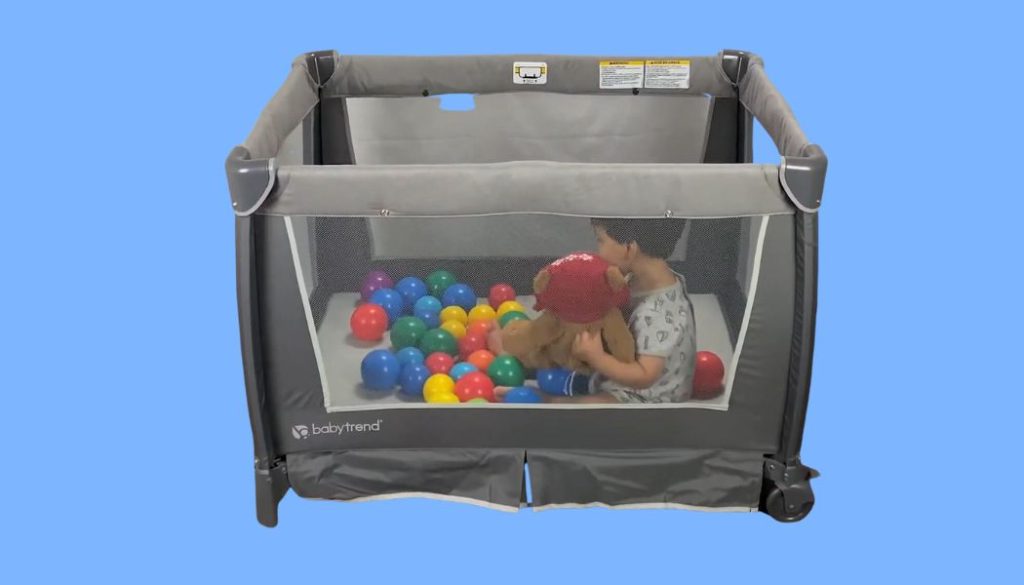When it comes to the safety of your baby during sleep, every parent harbors an instinctive desire to ensure their little one is securely and comfortably nestled. Alongside the myriad choices of cribs, bassinets, and other sleeping arrangements, the Pack ‘n Play has emerged as a versatile favorite among parents. But a pressing question remains: are Pack ‘n Play mattresses safe for your baby? This inquiry expands far beyond mere product reviews; it touches upon foundational concepts of sleep safety.
First, let’s delve into what a Pack ‘n Play actually is. These portable playards, designed primarily for convenience, offer a space for play and sleep, making them ideal for travel or compact living. However, the mattress that accompanies many of these products is often viewed with skepticism. This skepticism stems from broader discussions about safety standards, material quality, and proper usage. But here’s where a shift in perspective becomes essential. Rather than demonizing the Pack ‘n Play and its mattress outright, let’s explore the nuances of safety, comfort, and practicality.
The crux of the safety debate often revolves around the mattresses themselves. Generally, Pack ‘n Play mattresses are thinner than traditional crib mattresses—an aspect that begs for scrutiny. But does this fact inherently indicate danger? Not necessarily. Many parents fear that thinner mattresses can lead to suffocation or lack of support, yet when utilized correctly, these mattresses adhere to stringent safety guidelines. Most manufacturers follow the safety standards set by regulatory bodies, ensuring that the materials used are non-toxic and free from harmful chemicals. Thus, the discussion should center on how to use these mattresses safely, rather than whether they can be deemed safe.
As we explore mattress safety, one essential element comes to light: firmness. The American Academy of Pediatrics (AAP) strongly advocates for a firm sleeping surface for infants, with the intention of reducing the risk of Sudden Infant Death Syndrome (SIDS). A soft, plush mattress can pose risks, as a young baby may inadvertently sink into the material, leading to potential breathing difficulties. Most Pack ‘n Play mattresses fit the prescribed firmness criteria remarkably well. However, it is crucial to assess each product individually. Not all mattresses are created equal, and parental vigilance is paramount.
Moreover, let’s not overlook the role of bedding in enhancing safety. Many parents opt for fitted sheets crafted specifically for the Pack ‘n Play mattress that provide an additional layer of comfort without compromising safety standards. The importance of avoiding pillows, comforters, or stuffed animals cannot be overstated; these items present as potential hazards. A clear space devoid of such objects promotes a safer sleep environment. This commitment to simplicity aligns perfectly with the minimalist yet effective approach advocated by child safety experts.
In conjunction with bedding considerations, the usage of the Pack ‘n Play itself warrants discussion. It’s essential to be attuned to weight limits and age recommendations, as overloading the playard can destabilize it or lead to unintentional accidents. Furthermore, constant supervision when your baby is awake can help minimize risk, turning the Pack ‘n Play into a haven for both play and restful slumber. It’s a paradigm shift—from perceiving it as merely a baby bed to recognizing it as a multifunctional space requiring active parental engagement.
What about travel? One of the primary appeals of the Pack ‘n Play is its portability, making it a popular choice for families on the go. While being a superb travel companion, it’s vital to ensure that any sleeping space provided away from home adheres to safety protocols. This raises a query: are hotel cribs or borrowed playards as reliable? When traveling, it’s wise to carry your own Pack ‘n Play mattress— or at the very least, assess the space for its safety features.
Another aspect that merits attention is the lifespan of the Pack ‘n Play itself. Over time, wear and tear can compromise the mattress’s integrity. Routinely inspecting for tears, fraying, or sagging is a proactive measure every parent should adopt. Moreover, understanding the importance of expiration dates on baby products cannot be overstated; using a product past its intended lifespan can unintentionally elevate risk factors.
As we piece together the puzzle of sleep safety, environmental factors play a significant role. Positioning the Pack ‘n Play away from windows, curtains, and other potential hazards creates a controlled atmosphere, lessening risks associated with potential falls or sudden drafts. Keeping the environment at a comfortable temperature ensures that your baby isn’t subject to overheating—a crucial consideration for maintaining a peaceful sleeping experience.
In conclusion, navigating the world of Pack ‘n Play mattresses involves more than simply weighing the pros and cons. It’s about understanding safety standards, actively engaging with your child’s sleeping patterns, and creating an informed, vigilant environment for rest. Rather than viewing these mattresses as mere pieces of furniture, consider them as integral components of a holistic approach to sleep safety. By shifting from fear to a framework of safety awareness, parents can transform the conversation, build confidence in their choices, and ultimately cultivate a nurturing sleep space for their babies.
